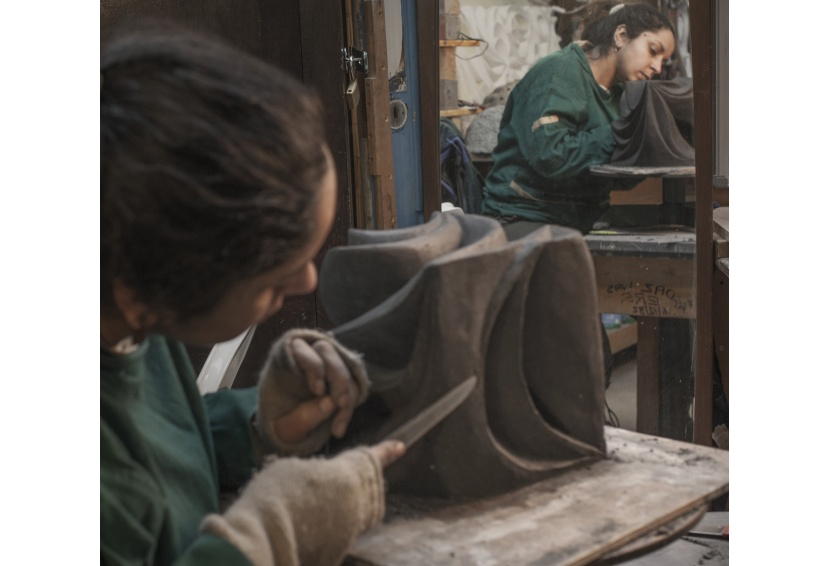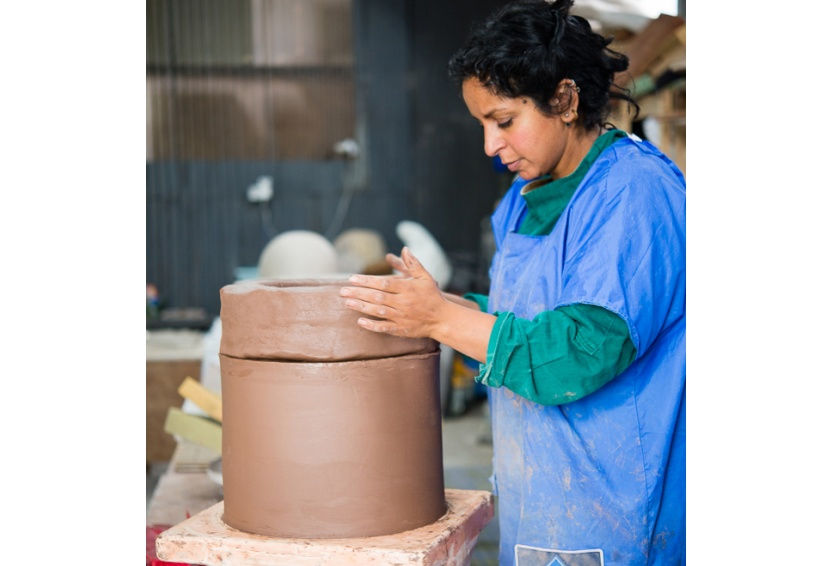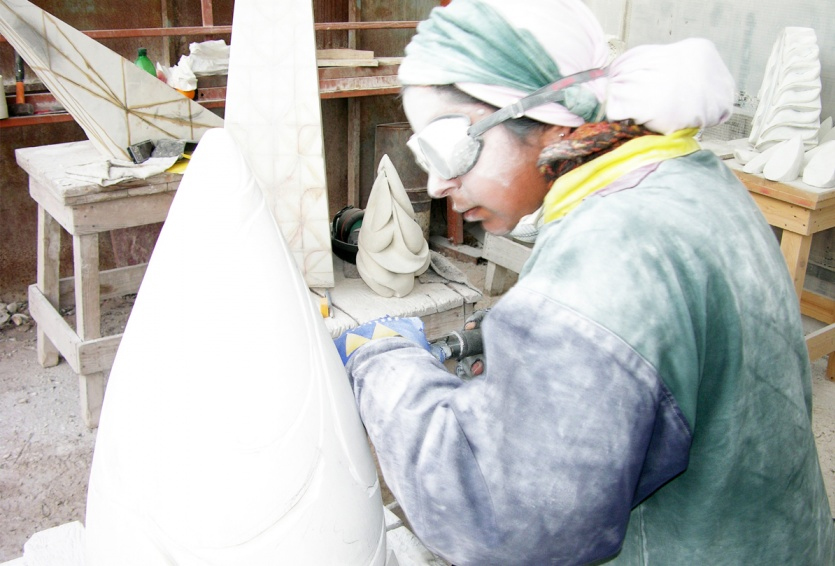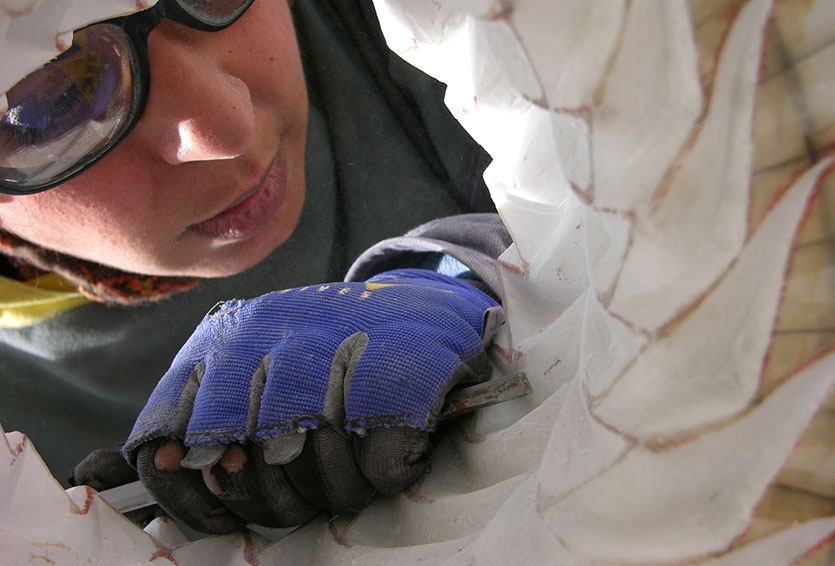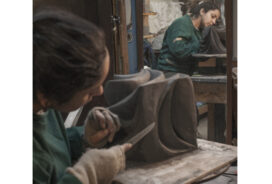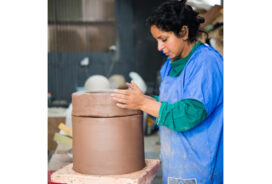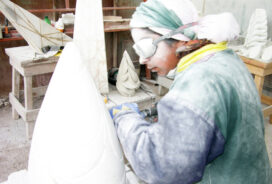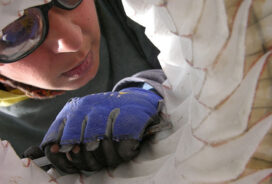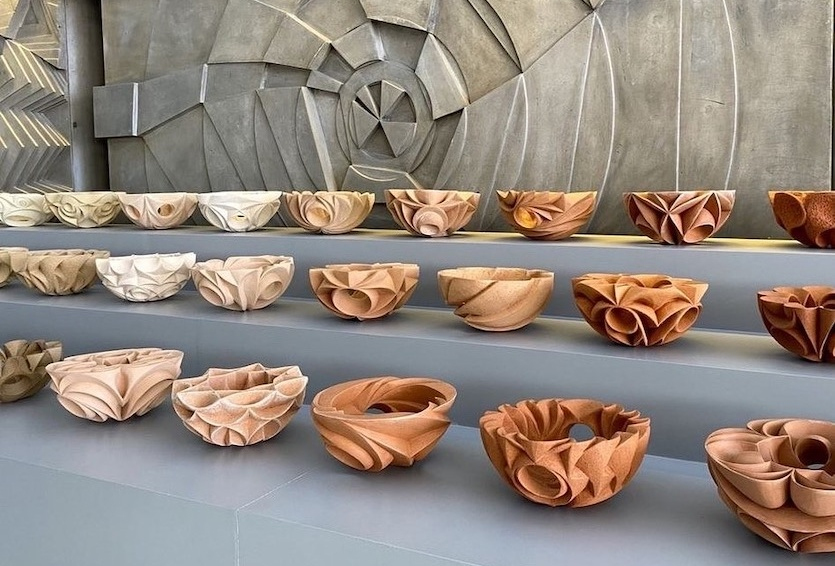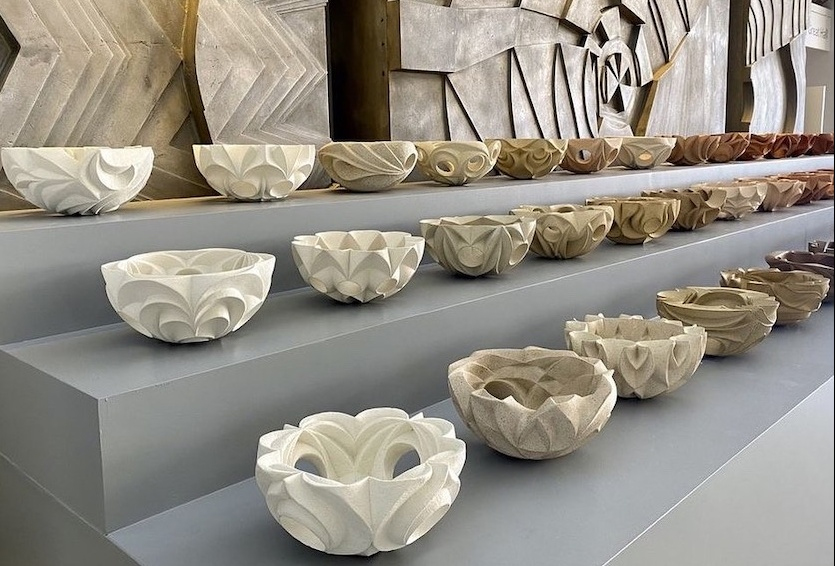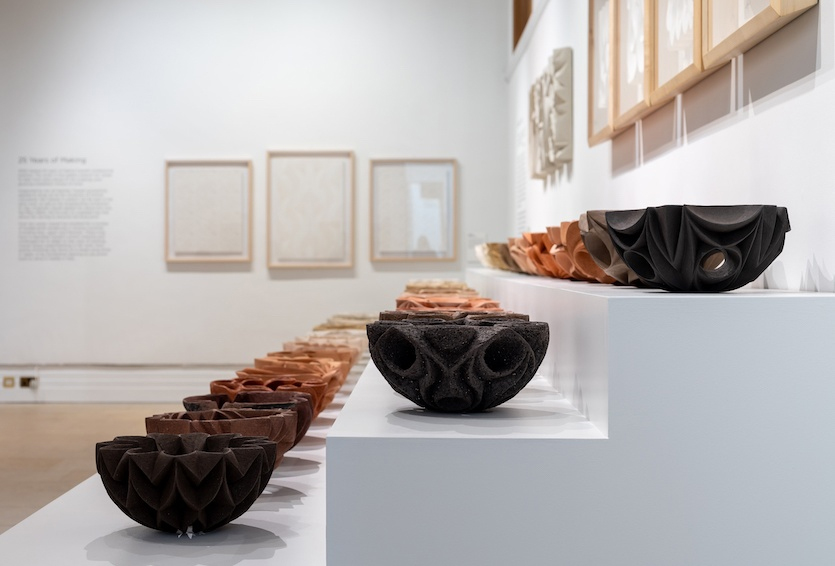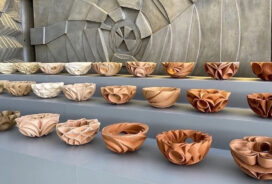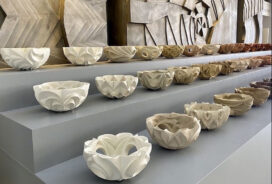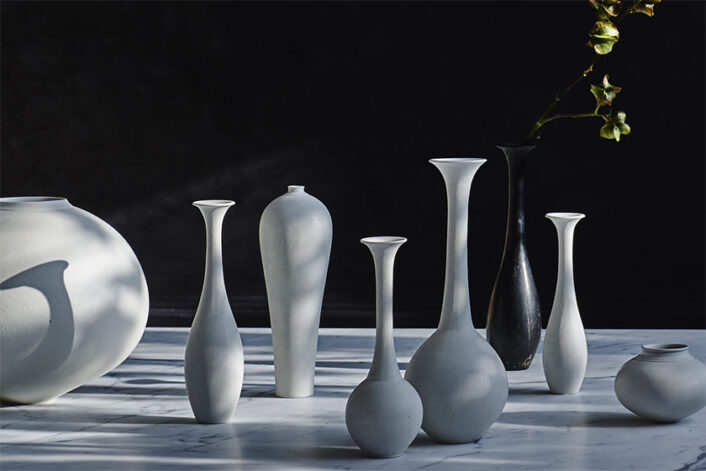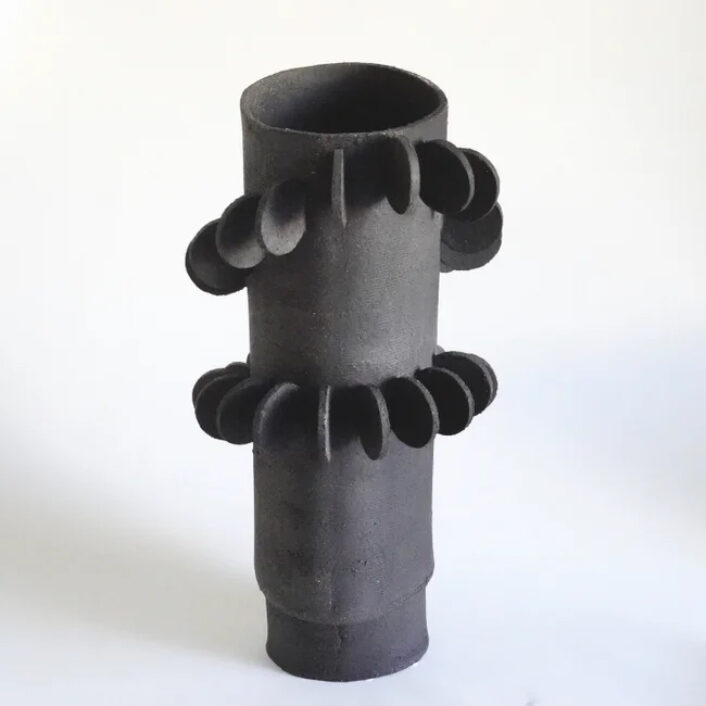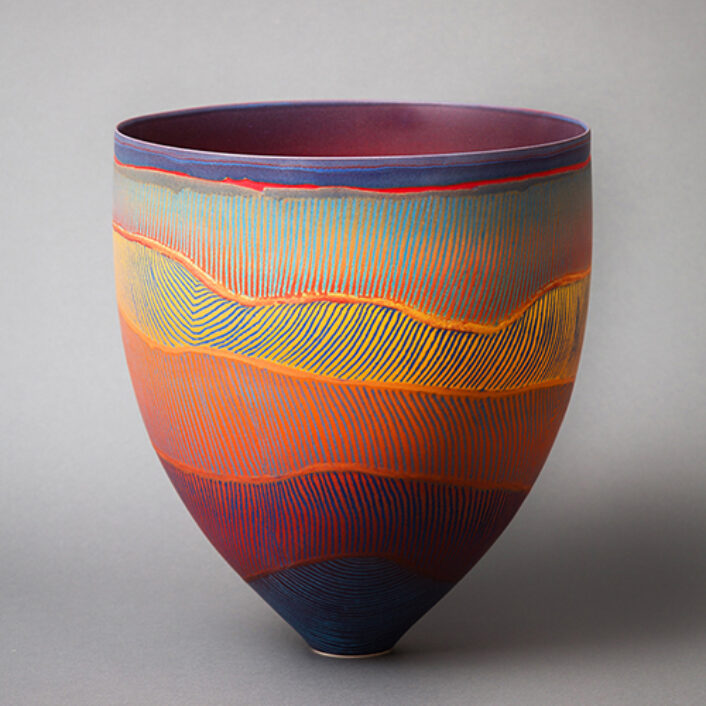Fine Art
Maker’s Spotlight: Halima Cassell
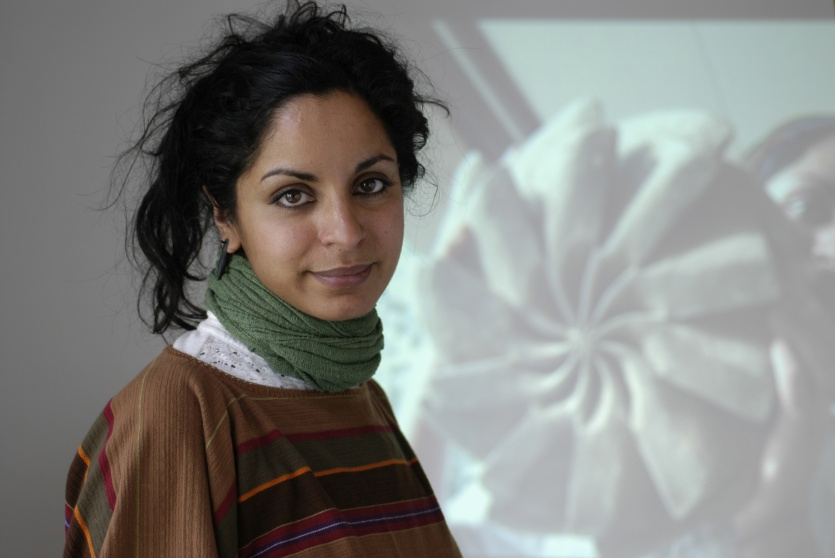
Image courtesy of: Halima Cassell
Halima Cassell is a Pakistani-born, British sculptor that has been creating fine art sculptures since graduating with a degree in 3-D design from the University of Central Lancashire. It was Cassell’s early curiosity and natural creativity that forged the way to an “art-based education,” and a career in ceramics.
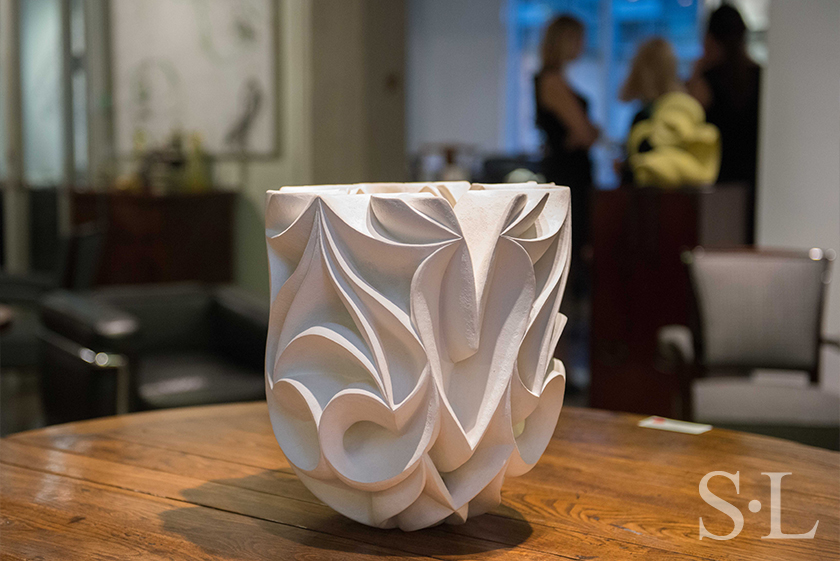
Capital, hand carved unglazed clay
Part of a group pop-up exhibition of contemporary ceramics by Joanna Bird Gallery, London, hosted by Suzanne Lovell Inc. We were delighted that Ms. Cassell was at our studio for this fantastic event!
Image courtesy of Suzanne Lovell Inc.
Cassell’s Pakistani roots and interest in African pattern work developed her unique style. Her ongoing fascination with carved space continues to inform her work. From the artist’s website, David Coggins was quoted as saying, “Halima carves out parts of her history, an exorcism of thought forms, a compulsion to make manifest the intangible, transmuting it into something hard and permanent. Like life, everything begins with the energy of a thought.”
Cassell works to create a mood as she manipulates and alters “the planes and facets of the patterns against each other.” This ensues in pushing the boundaries of clay… as it transforms from a material to an element, a form. The sculptor says that the most exciting part of her process is when “my flat designs become dramatically transformed when charted over a structure and then taken to another level by heavily carving into it.” Since Cassell prefers to leave her work organic in color, tones and textures are translated via a reliance on light and shadow.
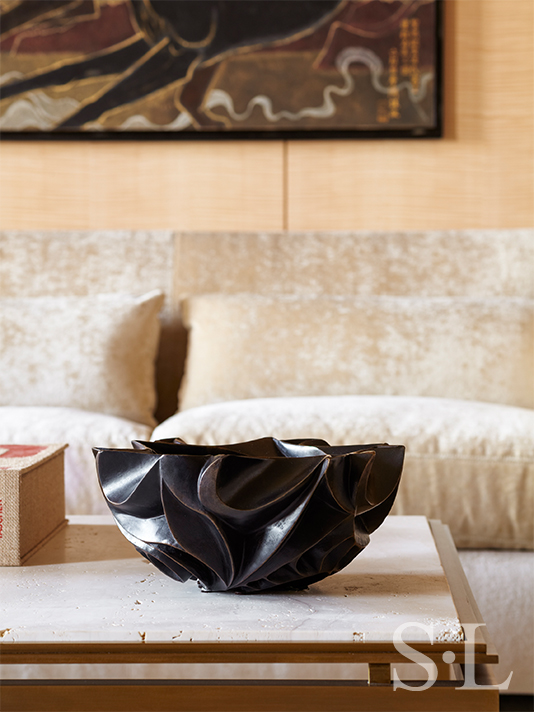
Staccato, 2009, in bronze, on display in our Lakeview Residence.
Along with clay, Cassell explores a variety of materials, including metal, for their potential. She states: “When working with other materials such as stone, wood and plaster, the processes and methodology in creating these pieces are very similar to when I am working with clay, the only difference being is the tools used and the material behaviour and properties.”
Image by Eric Piasecki courtesy of Suzanne Lovell Inc.
Cassell’s early work was influenced by traditional Islamic architecture; specifically, intricately carved buildings found all over the world. The artist was also influenced by repetitiveness found in structures in North Africa. Opposites have also played a big part in Cassell’s work: traditional vs. contemporary, big vs. small, and feminine vs. masculine. These unique relationships help Cassell “unify not only internal and external forms but also the parts to the whole.” Shying away from traditional narratives has allowed Cassell to question typical roles, bringing into question whether women always gravitate towards curvaceous forms, while men lean towards hard-edge contours and straight lines. As of late however, Cassell has become more interested in cutting more directly and intentionally into the vessel, almost in a way that contorts the form and deems it unsuitable as a “geometric volume.”
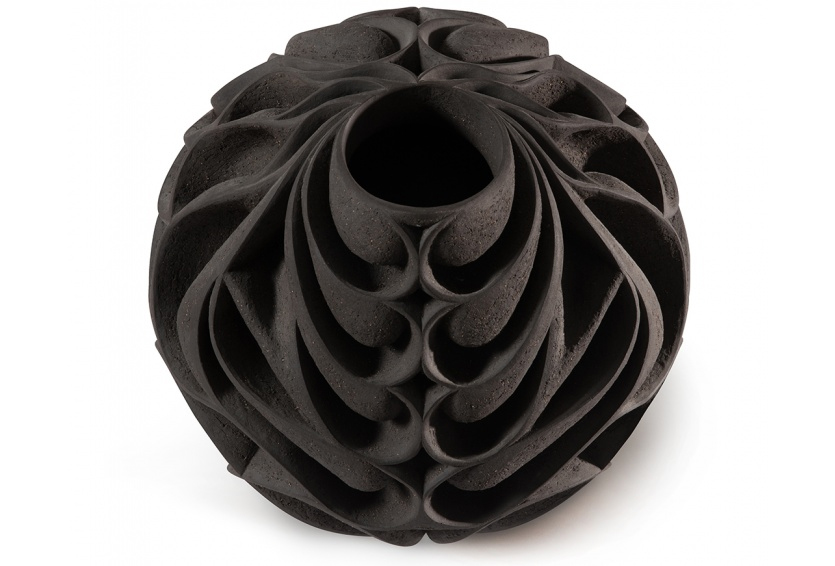
Phoenix, hand carved unglazed clay
Image courtesy of Halima Cassell
The sophisticated work that Halima Cassell creates often combines recurring patterns with strong geometric patterns. This is possible via a specific methodology that begins by using a heavily gorged clay because it allows for a thick surface which is able to offer a “canvas” for the carvings. Often, the vessels themselves are rather simple in form… this allows the pattern to be highlighted. However once the piece is actually formed, Cassell spends time working out the “mathematics of the pattern and the surface area of the form so that they work accurately and harmoniously together.”
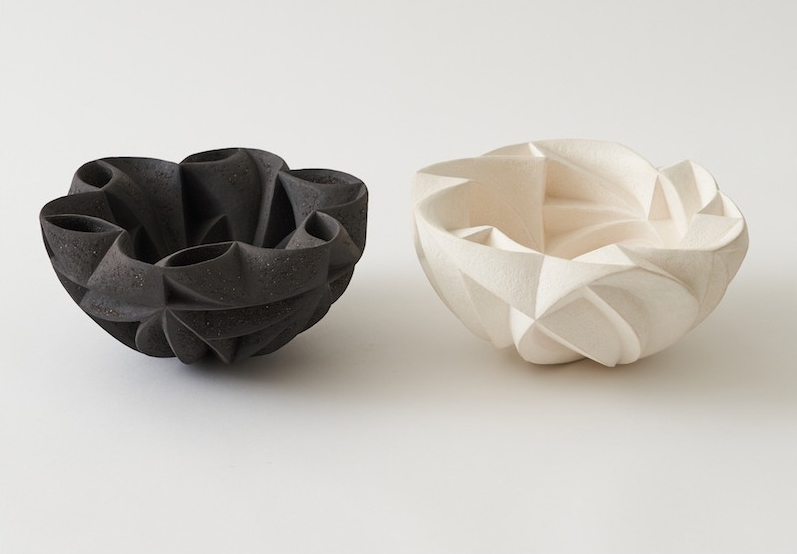
Wirbel & Velocity, hand carved unglazed clay
Image courtesy of Halima Cassell
Each piece takes between 100 and 280 hours of work depending on the piece’s size and pattern complexity. The work is slowly dried over a number of weeks; then, it is fired to a temperature which is dependent upon the clay’s capacity.
About her work, Cassell says (courtesy of The Shape of Things), “Like the differently coloured and contrastingly textured clays hewn from the Earth we are all of one substance, despite our superficial differences. This makes us all equal and it is my fervent hope that people will identify with this concept.”
For more inspiration visit Halima Cassell
